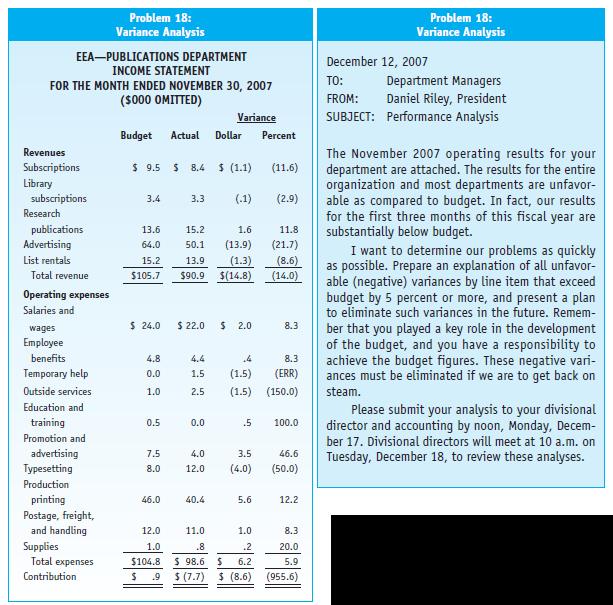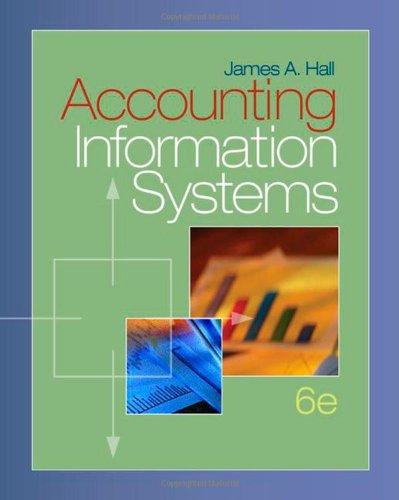CMA AdaptedVariance Analysis Engineers Education Association (EEA) is a volunteer membership organization providing educational and professional services
Question:
CMA Adapted—Variance Analysis Engineers Education Association (EEA) is a volunteer membership organization providing educational and professional services to its members. The professional staff is organized into four divisions with a total of 14 operating departments.
 EEA adopted an annual budget program many years ago as a means for planning and controlling activities. Each department of EEA prepares an annual budget in consultation with its respective volunteer committee(s).
EEA adopted an annual budget program many years ago as a means for planning and controlling activities. Each department of EEA prepares an annual budget in consultation with its respective volunteer committee(s).
After a series of reviews by both the professional staff and the volunteer structure, the budget is adopted. The professional staff is expected to comply with the budget in conducting its activities and operations.
The EEA’s accounting department generates monthly income statements that present actual performance as compared to budget for each EEA department. The November 2007 statement for the publications department is reproduced on page 427.
Accompanying the report this month was a memorandum from EEA’s president, Daniel Riley, which is also presented on the page 427.
Marie Paige, publications manager, was having lunch with Jon Franklin, continuing education manager, when the following conversation about Riley’s memorandum took place.
Paige: The volunteers must be giving Riley some static—the memo doesn’t sound like him.
Franklin: I think you’re right. One of EEA’s problems is that membership is down.
Paige: I heard that both growth and retention are bad. This is confirmed by my results. A set percentage of the membership dues of each member is assigned to us each month for the magazine subscription. This amount is down 12 percent. I have no control over this number because only members get the magazine.
Franklin: I wonder if the results are really as bad as they look. For instance, accounting has divided all of the annual budget figures by 12 to derive the monthly figures. This is okay for some things but not for most. What about you?
Paige: I agree. I don’t know why they do that when we spend so much time up front developing the annual budget. I know what Riley is attempting, but I don’t think he is going to get the results he wants. I know he wants to eliminate the negative variances, but some positive variances are really not favorable! We should be analyzing all significant variances—
positive and negative.
Franklin: What are you going to do—analyze just the negatives? Should we do anything before we prepare our reports?
Required:
a. The monthly income statements that EEA’s accounting department prepares for each department of EEA are a form of communication.
1.. Explain why the departmental income statements are considered a form of communication.
2.. In terms of the format of the income statement presented for the publications department, evaluate EEA’s departmental income statement as a communication device.
b. Paige stated that all significant variances should be analyzed because some positive variances are not favorable. Discuss why EEA’s departments should be analyzing all significant variances, both positive (favorable)
and negative (unfavorable). As support for your answer, identify a positive variance from the publications department’s income statement that may not be favorable to EEA’s operations and explain why.
c. Recommend a course of action that Paige or Franklin could take to encourage Riley to have all significant variances reviewed.
Step by Step Answer:






